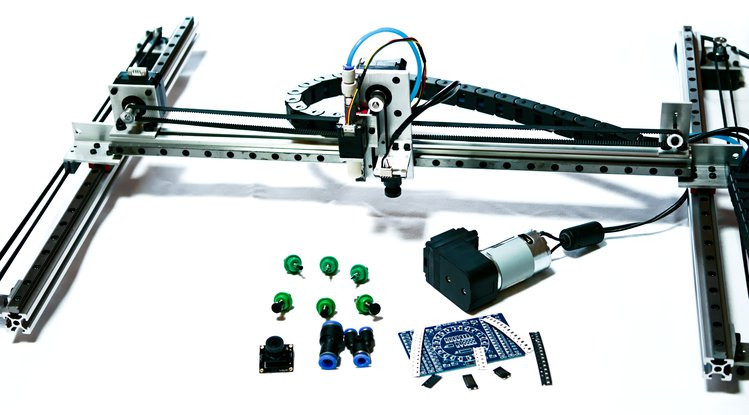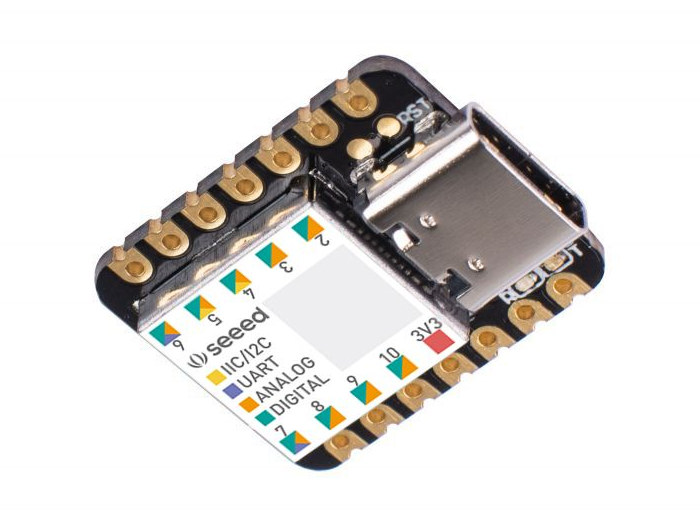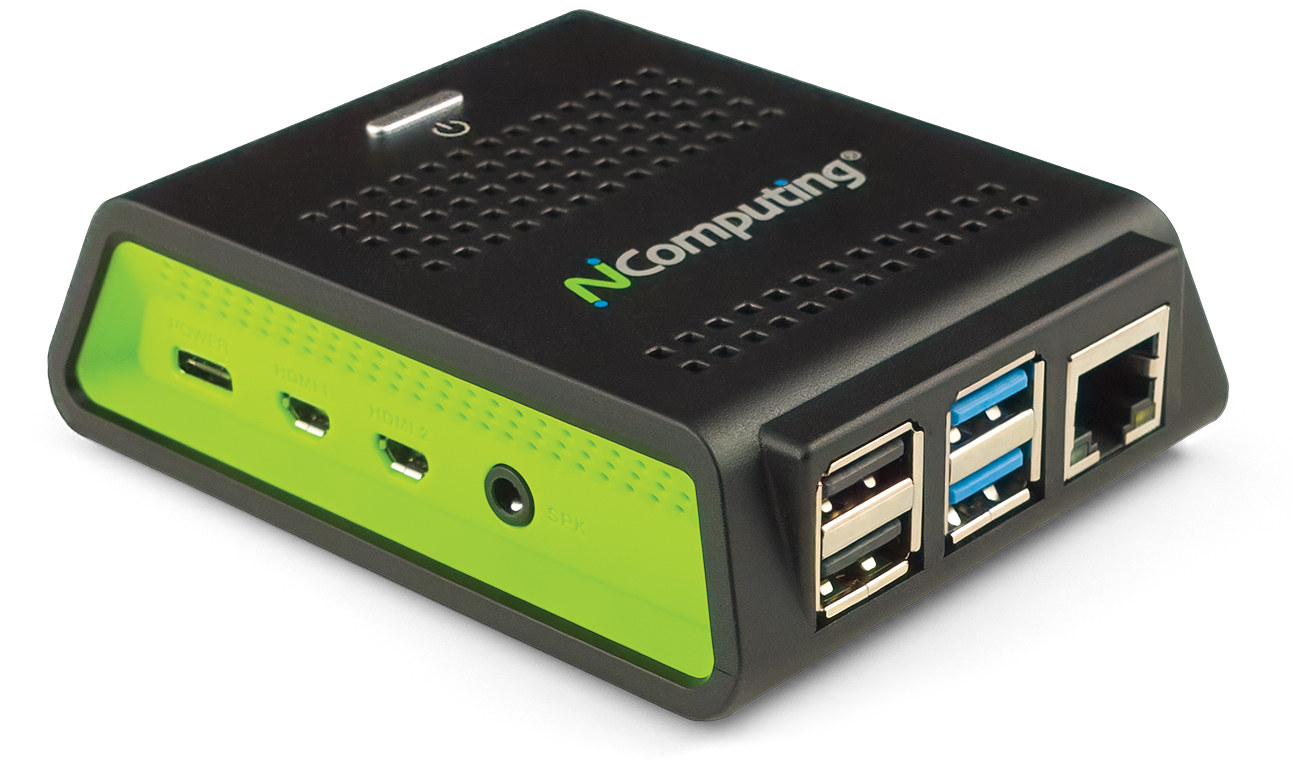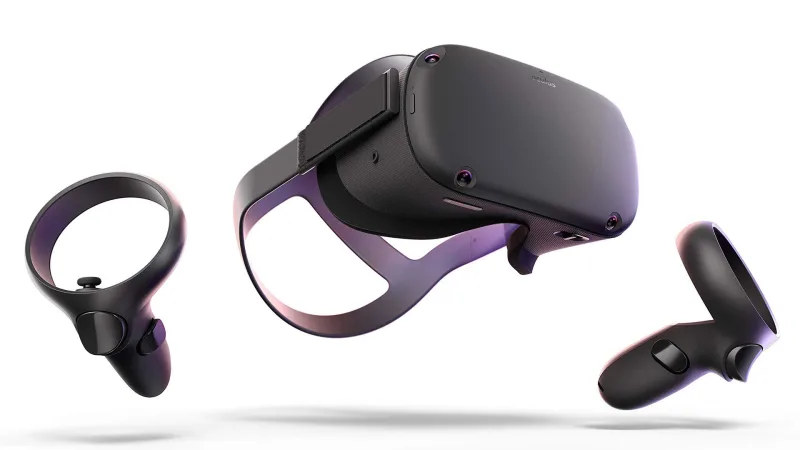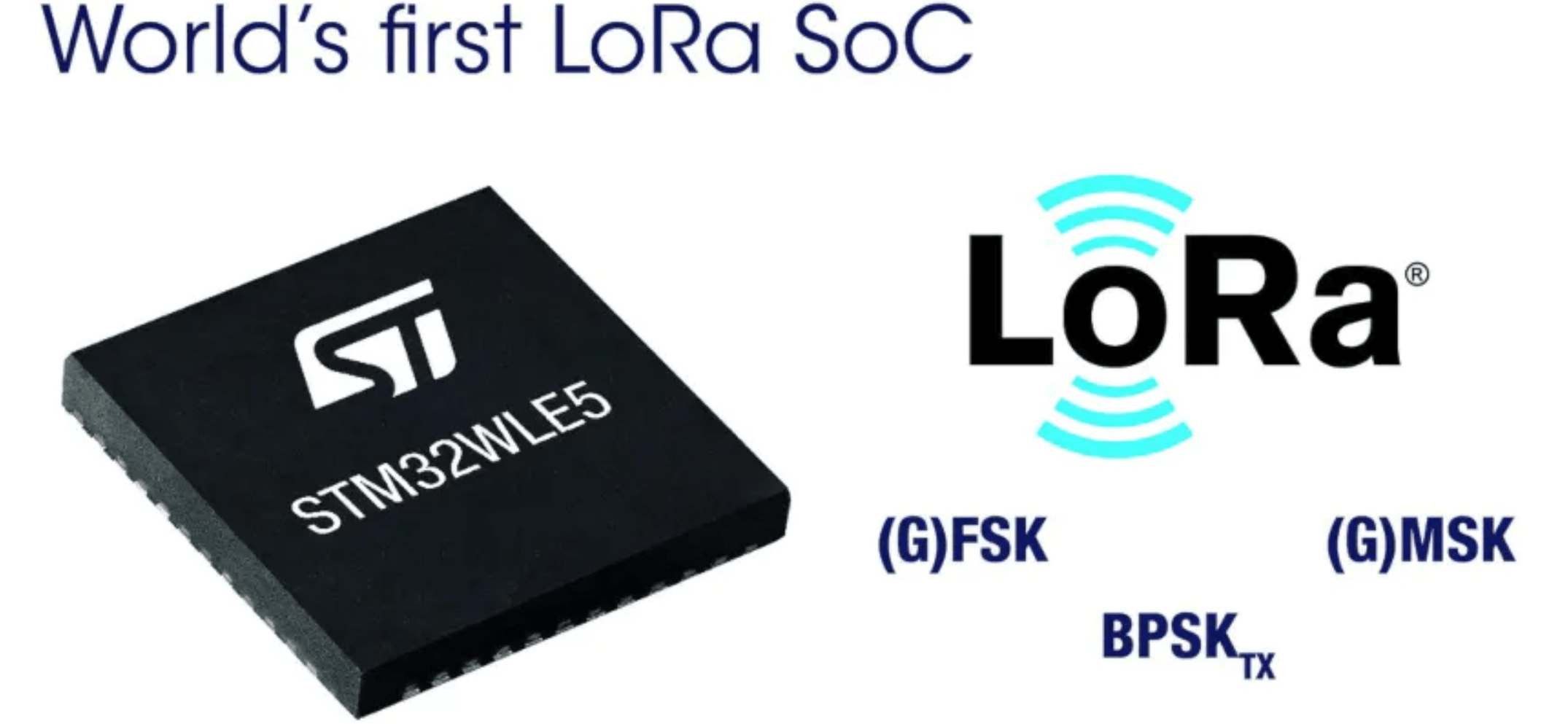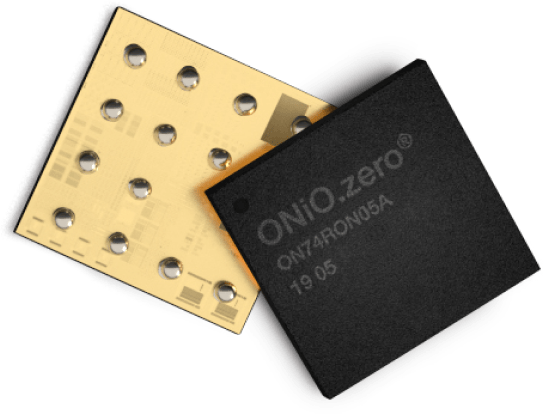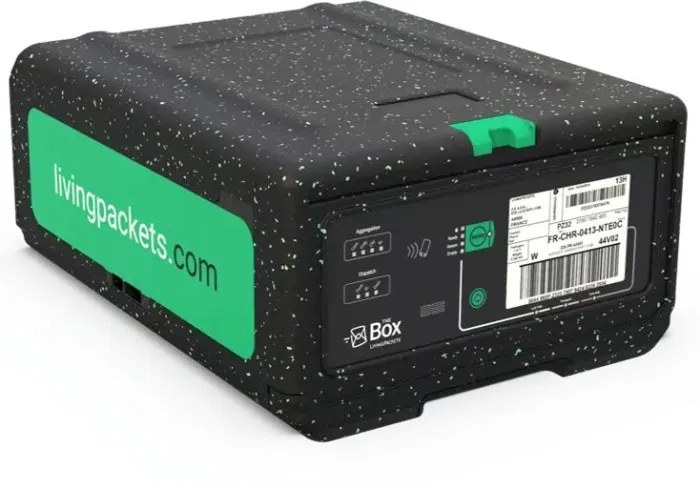If you have a small production run for your board, it may not be cost-effective to ask a factory to manufacture it for you, and assembling the boards entirely by hand will be a time-consuming process. Getting a pick-and-place machine to automate the process would save time, but even the cheaper models on Aliexpress cost several thousand dollars. Citrus CNC tries to address the cost issue with the SimplePnP open source hardware pick-and-place machine that brings the price down to several hundred dollars. SimplePnP key features and specifications: MCU – Microchip Atmega328p running GRBL firmware Motor Drivers – TMC2209 stepper for two-phase stepper motors Word Area – 300 mm (X) x 300 mm (Y) Z Travel – 23 mm Components per Hour – 750 with vision assist Component Size – As small as 0402 (1005 metric) Vacuum Heads – Single vacuum head (base model), or optional dual-head Nozzle System – […]
Seeeduino XIAO is a Tiny Arduino Zero Compatible Board with Battery Support
Seeeduino XIAO is the smallest Arduino compatible board from SeeedStudio’s Seeduino family. Measuring just 23.5×17.5 mm, the board is equipped with Microchip SAMD21 Arm Cortex-M0+ microcontroller and exposes various digital and analog I/Os. Seeduino XIAO specifications: MCU – Microchip SAMD21G18 ARM Cortex-M0+ microcontroller at up to 48MHz with 256KB Flash,32KB SRAM USB – 1x USB type C port for power and programming Expansion I/Os 2x 7-pin headers with 11x analog inputs, 11x digital I/Os, 1x DAC, SPI, UART, and I2C 3.3V I/O voltage (not 5V tolerant) Misc – 1x user LED, power LED, 2x LEDs for serial port downloading, Reset pads, SWD pads, 32.768KHz crystal oscillator Power Supply – 5V via USB-C power, power pads (VIN/GND) for battery Dimensions – 23.5×17.5×3.5 mm All main components are placed under a shield, but there may be some charger chip (nope: see comments) as the company explains the board supports batteries via the […]
NComputing RX420(HDX) Raspberry Pi 4 Thin Client Works with Citrix HDX
NComputing RX300 Raspberry Pi 3 thin client was launched in 2017 with support for the company’ vSpace Pro desktop virtualization solution for Linux and Windows, and I tested it accessing a Windows Server 2006 host located in Singapore, and performance was pretty good for a remote system as I could play 1080p YouTube videos, browse multiple tabs in Chrome, etc.. relatively smoothly. This type of solution is aimed at businesses, for which it may be easier and cheaper to handle a fleet of devices using thin clients and servers, instead of traditional PC’s. Beside its vSpace Pro RX300 thin client, NComputing also introduced another Raspberry Pi 3 thin client that same year with RX-HDX using a design similar to RX300 but instead integrating support for Citrix HDX virtualization technology. NComputing now unveiled an update for the latter with RX420(HDX) thin client based on Raspberry Pi 4 SBC with 2GB RAM. […]
Virtual Desktop and Oculus Quest Tips & Tricks
Hey, Karl here. I wanted to share some experimenting I did with the Oculus Quest we purchased as a family gift for Christmas. One of the features I was looking forward to was wirelessly streaming VR games from my PC. It is not officially supported by Oculus but Virtual Desktop allows you to do this. Virtual Desktop is an app that can be purchased through the Oculus store. Unfortunately, there are a couple of steps that need to be taken to stream VR to the headset. Oculus forced VD to remove the emulated VR feature in its official store version. Once it is purchased you can then sideload the emulated VR version through Side Quest. Side Quest is a simple tool that makes sideloading apps easy and has a bunch of demo and games that aren’t in the Oculus store. The instructions are easy to follow on the Side Quest […]
STMicro STM32WL is the World’s First LoRa SoC
There is no denying that the Internet of Things is going to disrupt a lot of markets and it’s already happening to some extent. The question being asked is: “What IoT connectivity technology will lead this disruption era?”. One major technology in this connectivity race is LoRa. LoRa’s long-range, low-power, small footprint, simplicity, and the amazing community backing it, have allowed it to find its way into various applications while gaining for the top LPWAN IoT connectivity technology. STMicroelectronics, one of the biggest semiconductor manufacturer, also believes in the potential of LoRa with the launch of STM32WL, making it the World’s first die-integrated LoRa System-on-Chip. Traditional LoRa embedded platforms usually involve the need for a separate MCU chip and different LoRa transceiver chips either coupled together in one single package or separately. This undoubtedly adds extra design complexity, size, and even cost. STMicro hopes to address this with their STM32WL SoC. […]
Lattice Introduces CrossLink-NX FPGA for Edge AI & Embedded Vision
Lattice CrossLink-NX FPGA Lattice Semiconductor has announced the first product associated with its Nexus Platform, the CrossLink-NX FPGA designed for embedded vision and Edge AI applications. There are two offerings at this time, the CrossLink-NX FPGA 17, and the CrossLink-NX FPGA 40. Recent Announcements The Nexus Platform was introduced at the beginning of December 2019, and now CrossLink-NX has been developed and is being manufactured. The first announcements of Lattice Nexus Platform and The CrossLink-NX Product Family came as the company’s moved to capture the embedded vision systems market. The Standout Features The low-power consumption, low soft error immunity, and 10Gbps MIPI are highlights of the CrossLink-NX FPGA. Other features include Instant On, with IO configured in 3 ms, and a total of 8 ms for the device. The Cross-Platform FPGAs The trends in technology are leading to devices that can cross function in a number of different tech environments. […]
ONiO.zero offers a RISC-V Microcontroller that runs without battery
Energy harvesting has been an exciting area people have tried to venture into mostly because of the possible applications that can arise from it. Newly invented energy-harvesting technologies accompanying low-power computing systems have pushed the boundaries of where embedded systems can be deployed. The demand for an increase in connected applications which require an underlying embedded system, and as we know, all electronic devices require a power source of some sort. This power source, batteries in most cases, comes with an accompanying buck regulator of some sort that will tend to increase the BOM. Aside from the BOM rise from the usage of batteries, there is also the shelf life and environmental aspects. The Norwegian specialist ONiO has introduced the ONiO.zero to address those issues. Having no battery means fewer components and a smaller design, which can easily be integrated into a wide range of solutions – be it fabrics, […]
LivingPackets THE BOX Reusable Packaging Comes with an E-ink Display, Removes the Need for Filling Materials
E-commerce and online shopping have flourished over the years whether you shop on Amazon and from sites in China. But that also means lots of carton board packages are being used and often thrown away after use, although personally I like to reuse them if I need to send packages myself. So it would be good if there was a way to reduce carton board package waste, and that’s exactly what LivingPackets is attempting to do with “THE BOX” which features an E-Ink display to display the recipient address and other information, and is meant to be re-used up to 1000 times. Here are some of the key features of THE BOX: E-Ink Display – Replaces the usual printed address label. It can be updated easily and does not consume power when not updated. Button to allow easy returns Integrated Holding Mechanism – Patented a holding system to replace bubble […]


